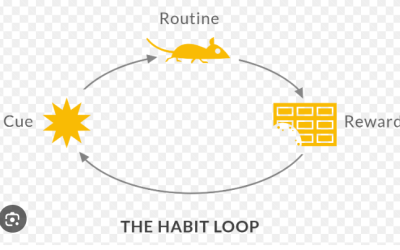Ready your ears, for you will hear a lot about this in the coming weeks, as this is the second year that all Irish – based companies with employees of over 250 have to release the data that shows the mean and median differentials in pay for their male and female colleagues.
Irish company An Post reporting a zero gender pay gap for the third year running is IMPRESSIVE .. well done An Post 👏
To give this achievement context : Deloitte’s research reveals that the overall mean gender pay gap is 13.2%, and the median pay gap is 10.2%.
Come again???!!!
What is the gender pay gap?
For those of you for whom I am talking double dutch, as they say, a super quick recap on what this pesky thing called a ‘Gender Pay Gap’ is :
It is the difference in pay between men and women in the workplace. It is calculated in 2 ways : the mean (average) and the median (middle)
To get the mean gender pay gap figure you add up the pay of all women in a company and divide by the number of women. You do the same for the men. The difference in those two numbers, represented in a %, is the mean.
To get the median gender pay gap figure, you look at the pay of all the women from the lowest to the highest and the point in the middle is the median. You do the same for the men, and again the difference between the two numbers, ie the gap, is represented in a %.
Clear?
IBEC has written a very good pdf as an intro guide : Mind the gap, an introduction to gender pay gap reporting if you want to learn more.
What causes the gender pay gap?
Getting to the numbers is clear enough. What is more complex is uncovering the reasons the gap exists in the company in the first place. This is usually multifactorial, and can differ across companies. But let me say that the lack of female representation at the higher rungs of a company’s structure is a root cause. Which can also be multifactorial. Underlying biases in the company also play a role.. from gendered biases such as the Motherhood Penalty to Institutional Bias to Hiring Biases.
Barriers are created, many barriers.
Tackling Gender Bias takes awareness, motivation, work, and collective effort.
As An Post CEO David McRedmond said “The work that has gone into achieving this milestone but more importantly, the work that goes into maintaining and improving on it year on year should absolutely be commended”.
Structures – cognitive, societal, culture that create the Gender Pay Gap
Let’s dig a bit more into the complexities that exist in our society, structures, and unconsciously thinking minds that create the gender pay gap.
There was a very good piece in the Irish Examiner ‘Pay gap affects mums more than dads’ that explores a core contributing factor : parenting. Claudia Goldin, the recent nobel prize winner for economics for decades long work in this area, argues that ‘it’s not the gap and earnings between men and women that matters, but the gap between fathers and mothers’.
The ‘Motherhood Penalty’ is an underlying societal bias that disadvantages mothers who take career breaks to care for children. These mothers see their career trajectories, salaries and pensions negatively impacted by this decision. The fathers of the same children experience no impact on their careers.
It’s too easy to say ‘it was her decision’. Because of course it ultimately was. But behind the decision is the weight of society’s deep conditioning : females are maternal, caring, communal, it is only natural that they will be the primary caregiver. Society’s structures reinforce this and for a very long time, maternity leave was the only show in town. Paternity leave exists now, but many are slow to take it. A mindset shift is required.
Indeed the conditioning ran so deep here in Ireland that we wrote it into our constitution, with Article 41.2 stating that the state will ‘endeavour to ensure that mothers shall not be obliged by economic necessity to engage in labour to the neglect of their duties in the home’. Firmly cementing into the Irish psyche that women were wives and mothers above all else. Fun fact : this is STILL in our constitution today, in the year 2023.
The conditioning runs so deep that I recently showed a photo of my male friend with his newborn baby and commented that ‘Tim is home minding the baby’. Minding! His own child. That would be parenting. My conscious mind believes parenting is equally the responsibility of both sexes, and this same mind is immersed in the world of Unconscious Bias for many years now. And yet, my unconsciously mind is so deeply conditioned by a very Irish catholic upbringing in the 1980s that left unchecked it reveals it’s biases around parenting.
Ultimately this career gap that women take to parent means they never catch up on their careers, and is one of the evidenced factors in the lack of female representation at the more senior rungs of an organisation. And this, my friends, is where the gender pay gap shows up.
The broken rung
“If no woman is getting through to a senior decision-making position, this suggests a structural or cultural issue.”
Women won’t just rise to the top, despite their ambition, ability and potential. Succession planning is required to ensure they are represented at the roles that feed into the senior roles.
McKinsey have been monitoring and measuring the ‘broken rung’ : ”For the ninth consecutive year, women face their biggest hurdle at the first critical step up to manager. This year, for every 100 men promoted from entry level to manager, 87 women were promoted. And this gap is trending the wrong way for women of color: this year, 73 women of color were promoted to manager for every 100 men, down from 82 women of color last year. As a result of this “broken rung,” women fall behind and can’t catch up.”
Actions to address the gender pay gap
Awareness is the starting point to addressing the gender pay gap. Awareness through education. ‘Do the best you can, until you know better. Then, when you know better, do better’. (Maya Angelou) When you know better, you can challenge things, change things, improve things. Unconscious Bias training is an action you can take to become aware and educated.
Recommended reading on the topic



